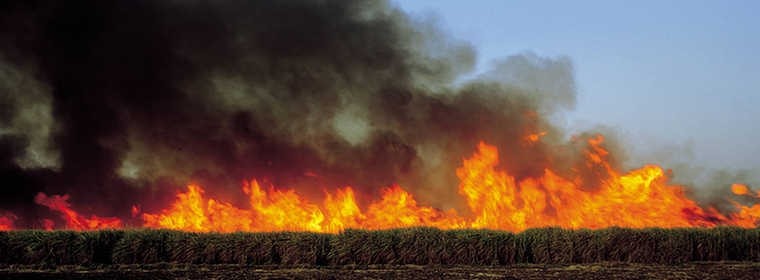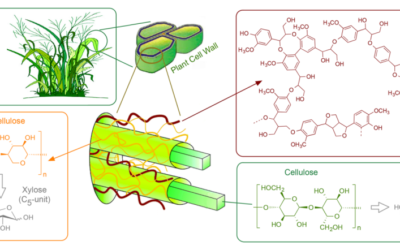
Sugar cane is burnt prior to harvesting
Harnessing energy from cane trash.
Green Cane Harvesting
The Chimera™ concept involves topping the cane and harvesting it with the trash left on the stalks. The tops are left in the field where they conserve the fertility by returning organic matter to the soil. The harvested cane is transported to the mill with the trash adhering.
Chimera™ therefore releases cellulosic feedstock for biobased chemicals (furfural!) or additional energy production!
Chimera™ provides exceptional economic and environmental benefits.
In-Field Cane Burning
over 90%* of SA sugar cane is burnt in the field
– It causes widespread air pollution and smuts fallout.
– It is a waste of significant amounts of renewable energy.
– Burnt cane deteriorates much faster after cutting than unburnt cane, resulting in reduced sugar extraction and the generation of highly undesirable chemical products (such as dextran) which make sugar processing problematic.
– The fertility of the soil declines because of the impact that the fires have on reducing the natural microbial flora of the soil which give the soil its health.
– Cane burning contributes to global warming due to the release of large quantities of CO2.
– Burning contributes to wind and flood water erosion because it exposes the soil.
* increased from 90.6% to 91.3% in the 201/11 Season (Ref.:EIGHTY-SIXTH ANNUAL REVIEW OF THE MILLING SEASON IN SOUTHERN AFRICA (2010-2011) , SMITH GT, DAVIS SB AND ACHARY M Proc S Afr Sug Technol Ass (2011) 84: 37 – 65)
Background Information on Cane Fires
2. The second: Lightning starts the fire.
3. The third (and by far the most common): The cane is burnt deliberately prior to harvesting. The main reasons for this are:
– Processing burnt cane results in lower undesirable plant components (mainly dry leaves, called trash) in the factory, which results in a higher extraction of sugar.
– It is easier to harvest cane that has been burnt – there is less bulk and the cane fires usually chase snakes away.
– The transport costs for bringing the harvested burnt cane to the sugar mill are lower, since cane leaves take up space, but do not add value in terms of sugar extraction.



